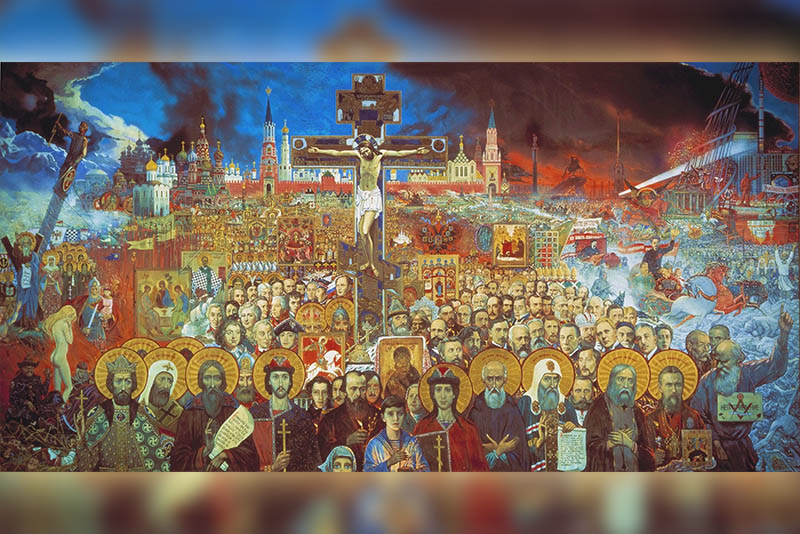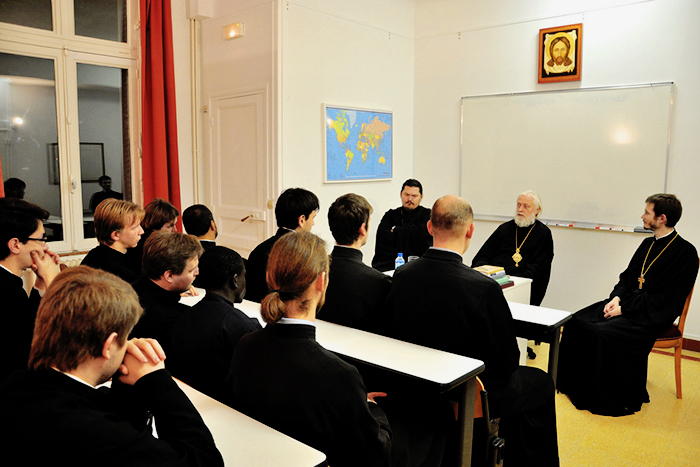
Today the pectoral cross is deeply associated with the image of a priest. It is hard to believe that this element of the priestly attire is relatively new, but this is exactly the case.
The ancient Church did not use pectoral crosses in their current form. Its closest analogue in ancient times was the encolpion, a small cross-shaped box, on the front side of which there was an image of the Savior, the Mother of God or the saints. Inside the encolpion particles of a consecrated prosphora or relics of saints were placed. St John Chrysostom (IV century) testifies to the custom of wearing encolpia, “… many, both men and women, received a small particle (note. of the Venerable Wood of the Life-Creating Cross of the Lord), overlaid it with gold and wore on their necks as decoration…”
Gradually, the encolpion became an attribute of the episcopal dignity, which it remained in the Russian Church until the 18th century, when bulky encolpia began to be replaced by smaller metal pectoral crosses, already in the form that is familiar to us today. These crosses were worn only by bishops (unlike the modern practice where bishops mostly wear panagia in everyday life). There were however a few exceptions. In 1701, the right to wear a pectoral cross was granted to the abbot of the Trinity-Sergius Monastery, and then passed on to all his successors. In 1722, the right to wear the pectoral cross was granted to archimandrites – members of the Holy Synod. After 1742, all archimandrites were ordered to wear pectoral crosses.
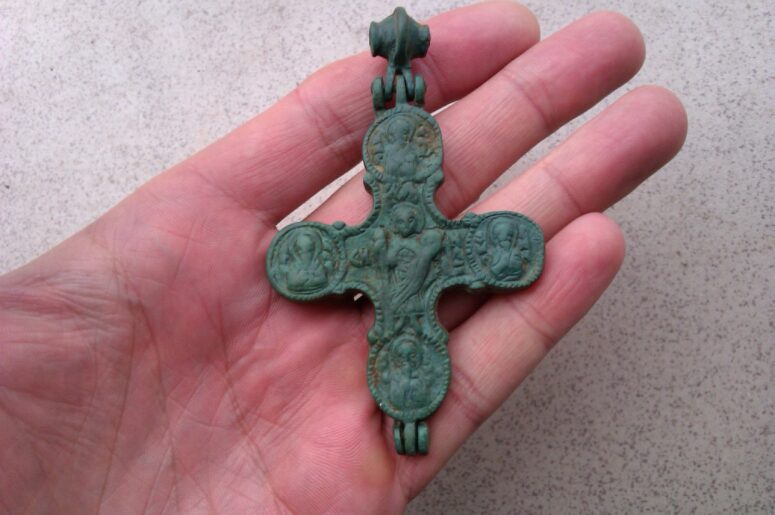
The pectoral cross began to be granted to ordinary priests as a reward after 1797, (only after the hypogonation, skufia and kamelaukion). It was a four-pointed silver gilded cross with the image of the Crucifixion. After 1820 the same cross began to be made of gold. Priests who already had one of the above-mentioned crosses were allowed to receive crosses with precious decorations as gifts from parishioners.
Another opportunity for a priest to wear a pectoral cross was to obtain an academic degree. However, these crosses (with the exception of higher doctorate) were worn in a buttonhole, in the collar of a cassock.
It wasn’t until slightly over a century ago (1896) that the pectoral cross began to be granted upon ordination, thus becoming a distinctive symbol of a priest. This innovation was established by the decree of Emperor Nicholas II, hence its popular historical name “Nikolsky cross”. These were eight-pointed silver crosses with a relief image of the crucified Christ on the obverse and the words from the St Paul’s Epistle to Timothy “Set the believers an example in speech and conduct, in love, in faith, in purity” engraved on the back.
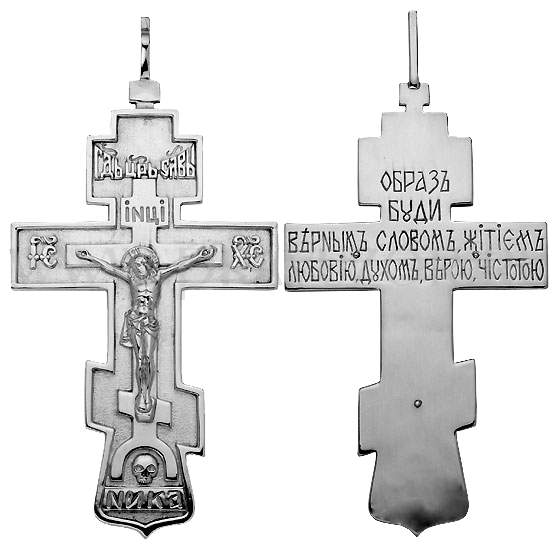
For the most part, the purpose of introducing pectoral crosses among all priests and hieromonks was to make their everyday robes distinguishable from the monastic attire, to which it had become very similar in the course of time. Both priests and ordinary monastics wore their outer cassocks over undercassocks, which made it impossible to distinguish a presbyter from a monk. This often led to certain embarrassment, for example, when people tried to receive a blessing from a simple monk.

It should be noted here that the tradition of wearing pectoral crosses differs in different Local Churches. For example, in Greece, the pectoral cross is still an attribute of bishops and a rare reward for priests (who still only have the right to wear it during worship). Even more interesting is the situation in the Romanian Orthodox Church, where the right to wear the pectoral cross can be granted to a deacon in reward of his special merits. Interestingly, a deacon awarded with such a cross is given the title of hierodeacon, regardless of whether he is a monk or a layman. In common with the Greek Church, the Romanian clergymen can wear their pectoral crosses only during worship.
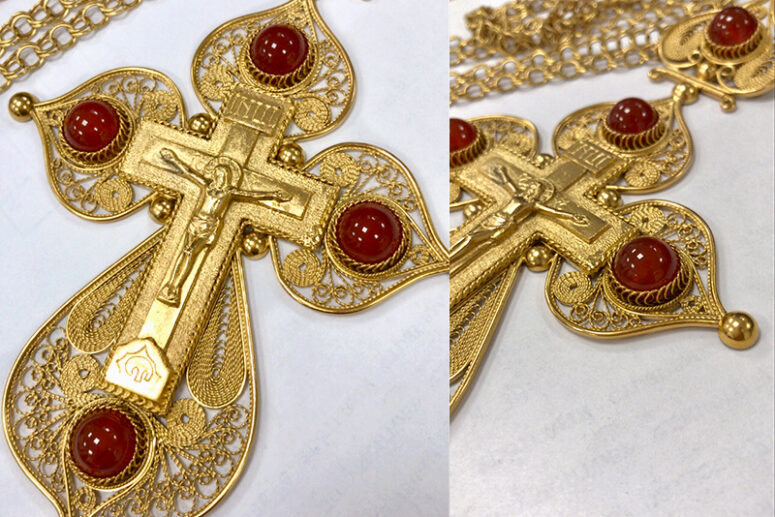
Today there are several types of pectoral crosses, given to priests in order of ascending priority. A newly ordained priest or hieromonk receives an eight-pointed silver cross. The following cross (sometimes called “an archpriest’s cross”) is a reward (given after the kamelaukion for the white clergy, or after the hypogonation in the case with the monastic clergy). It’s a four-pointed, gilded cross with the inscription “To a presbyter leading the faithful by his example in speech and conduct” on the reverse. The next in dignity is the pectoral cross with decorations, outwardly much the same as the cross worn by bishops. A priest can also be awarded the right to wear two crosses with decorations at the same time. In rare cases, priests may be honored by a patriarchal cross, a particular type of cross which can only be awarded by the Patriarch. A priest with such a cross can wear it simultaneously with two more ornamented crosses.

It’s amazing how quickly a new tradition can appear in the Church and become absolutely authentic. Priests living in the beginning of the past century did not even think that pectoral crosses would soon begin accompanying them in their pastoral labors, serving as reminders of their most high mission and making great gift ideas for parishioners wishing to delight their beloved pastor.


